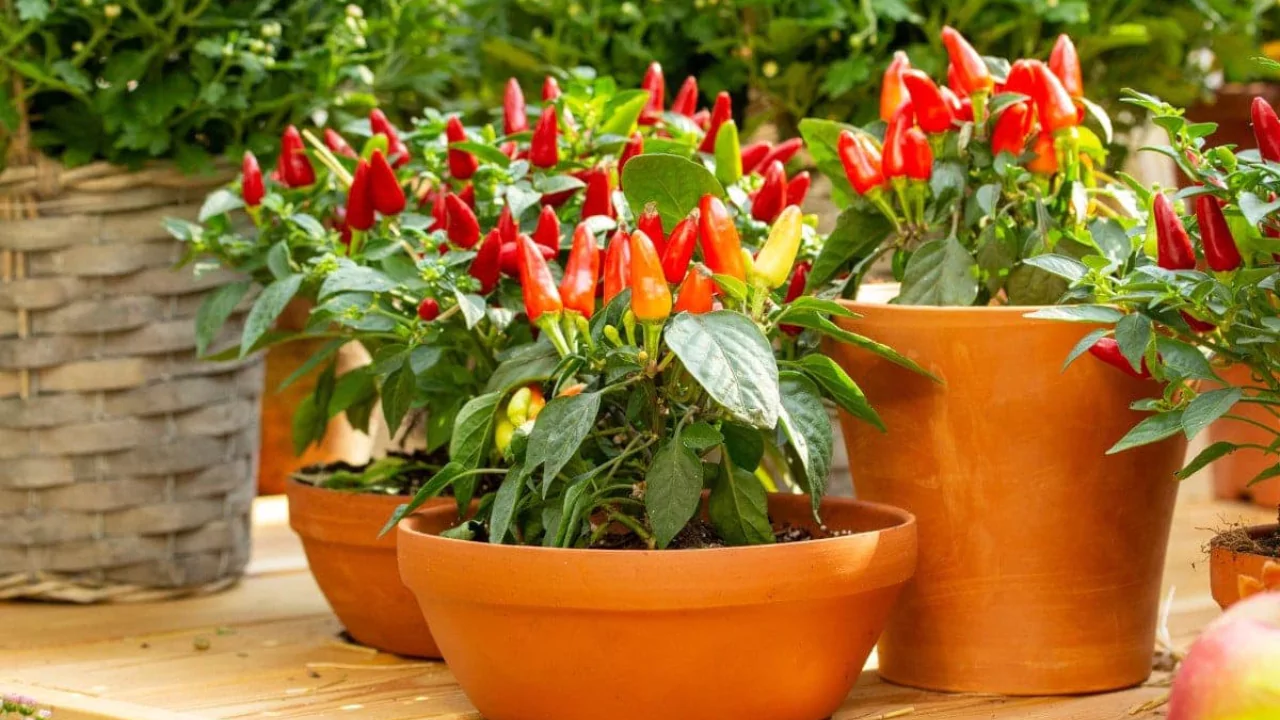
Peppers can be a challenging crop to cultivate. Even if you have an outdoor garden, it may be prudent to grow your peppers in containers. This is because temperature, water, and fertilizer can be managed more efficiently in containers, which could lead to better quality pods.
Pepper Varieties
With the right conditions, most varieties of peppers can be successfully grown in containers. Recommended varieties include: Yolo Wonder, Keystone Resistant Giant, Canapé, Red Cherry, Jalapeno, Fat’n’Sassy, and Early Thickset. Additionally, hot pepper enthusiasts have had success growing many different types of specialty peppers in containers.
Planting Peppers
Peppers need warm air and soil, so it’s better to buy seedlings instead of planting seeds. You can purchase seedlings, or grow your own. One advantage to growing your own seedlings is that you can select thick, compact, bushy plants. Buy as many containers as the varieties you want to grow. Each plant must have around 1 foot of space in all directions.
You can transplant seedlings outdoors when nighttime temperatures remain above 55 degrees F and daytime temperatures reach 70 degrees F. If cold weather is expected, bring containers indoors or to a warmer location or cover them at night.
Growing Peppers in Containers
Peppers possess moderately extensive root systems which require containers that are at least 14 inches deep. Ideally, deeper containers are more productive. While small pepper plants (under 1 foot tall) do well in two-gallon containers, larger varieties require at least five-gallon pots.
With regard to peppers, any container with sufficient volume and proper drainage will work. If your container does not have holes, you may drill some. Holes should be covered with mesh to keep soil in while blocking pests. Gravel placed on top of the mesh is done by some growers too. Some of these pots should not be placed in outer containers without drain holes as this would nullify the benefit offered by the holes.
Some pepper varieties, like Lemon Drop and some others which are pendulous in nature, are very attractive and productive when grown in hanging baskets. Even smaller varieties could be tried in window boxes.
In regions where temperatures soar, and the sun shines relentlessly, these pepper pots provide reflection to the sun and are made of white or silver, helping the containers reflect it back. Thus, preventing roots from overheating.
Planting Mix for Peppers
Typically, gardening experts avoid using garden soil in containers because it is dense, drains slowly, and may contain harmful pests. They suggest using commercial potting mixes or creating homemade mixes of equal portions of perlite, compost, and potting soil. Nevertheless, some gardeners have reported success using garden soil in both potting mixtures and on its own.
Caring for Peppers
Due to regional differences, peppers may prefer partial shade, morning sun, or full sun. They require warmth but need to avoid overheating, particularly in hotter regions. One major advantage of container gardening is the ability to relocate plants to more favorable locations and conditions.
Pepper plants cannot tolerate dry soil; it will impede or halt production. The challenge will be maintaining damp, but not saturated, soil. Mulching aids in preserving moisture while inhibiting the growth of weeds.
Beginning early in the growing season, fertilization with a balanced liquid fertilizer, time-release fertilizers, or fish emulsion in weak concentrations should commence. Excess nitrogen will result in an overabundance of foliage and minimal pepper production.
Aphids and flea beetles are two pests that you should pay attention to. If you smoke or handle tobacco, make sure to wash your hands thoroughly before touching any of the pepper plants. This is important because the plants can contract the tobacco mosaic virus.
To collect the pepper, use a sharp knife to detach the stem. Avoid pulling or twisting the pepper pods as this may weaken the plant and make it more vulnerable to pests and illnesses.